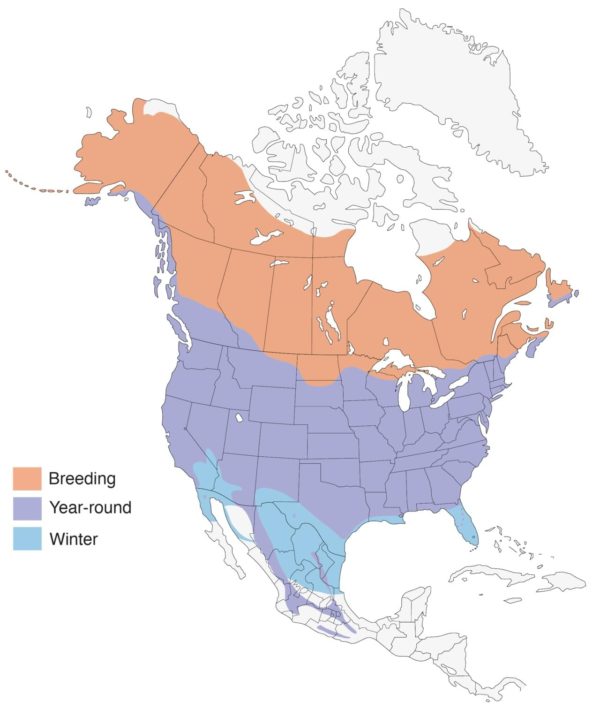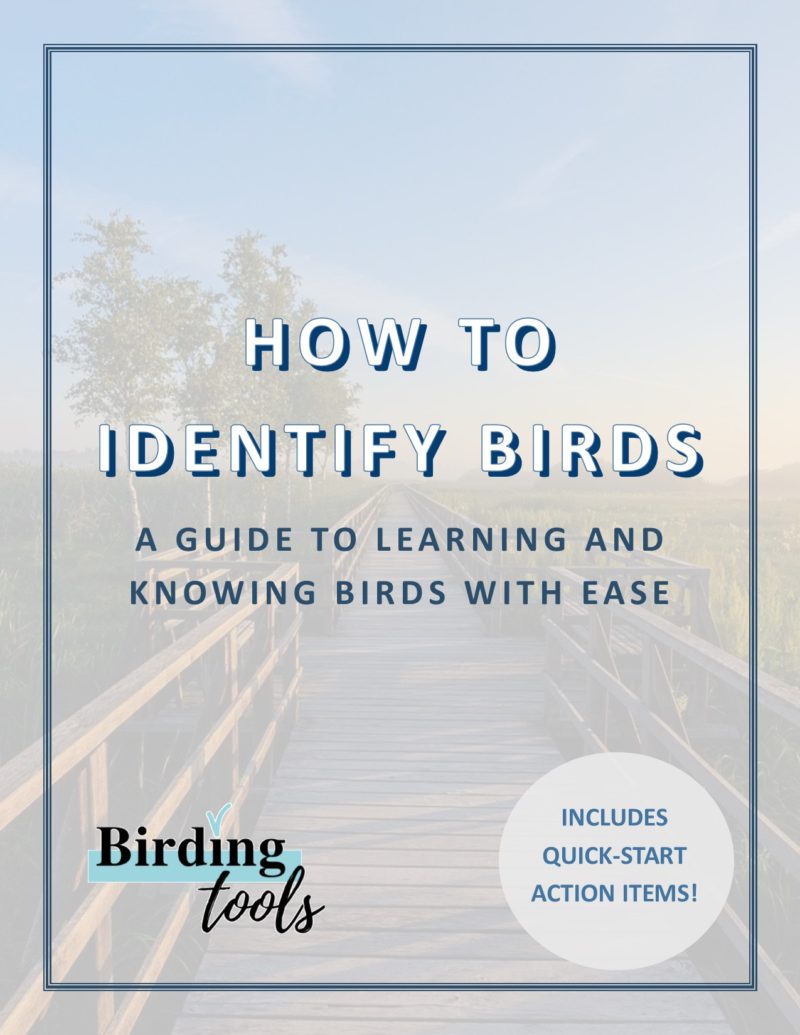BIRD IDENTIFICATION
There are FIVE things that help us to identify a bird, and those are Size and Shape, Color and Pattern, Identifying Behaviors, Habitat and Distribution, and Sound.
To get these five keys to bird ID and extra tips and action items to get you going on your bird ID dreams, download our How to ID Birds Guide now.
SIZE AND SHAPE
The size and shape of a bird doesn’t change throughout the year. Isn’t that wonderful?
Each family or group of birds has an overall size and shape, or silhouette. Different birds have different bill shapes and sizes, head shape and size, tail length, leg length, and foot shape.
Understanding the silhouettes of the main bird groups found in your region can help narrow down what bird you’re trying to ID. Let’s take this duck silhouette and this sparrow silhouette, for example.

See how different they look? Pay attention to these differences in overall size and shape, and the different sizes and shapes of the parts of a bird.
COLOR AND PATTERN
When you flip through your bird field guide, you’ll quickly see just how many colors and patterns birds can have!
Take special notice of the head and wing colors, such as the crown of the head, eye markings, wing bars, or other patterns that stand out immediately.
Start from the top of the bird’s head and work your way around to the eyes, cheeks, and throat. Note the subtleties in color variations and sketch them in your mind or on paper. Do the same with distinguishing wing colors. Then, when you go to your bird book, you’ll better be able to determine which bird – in a sea of similar-looking birds – you are actually looking at.
BEHAVIOR
Bird behavior is another one of those things that doesn’t shift with location or with the change of the seasons.
Consider what the bird is eating and where, how their posture looks like as they perch or eat, and how they fly. Different bird families, and even individual species, differ in these characteristics!
If you’ve seen a woodpecker undulate up the side of a tree, you probably knew it was a woodpecker, or some kind of tree creeper. They’re some of the only birds that exhibit this behavior!
HABITAT AND DISTRIBUTION
Habitats are where a bird is found more locally, including the kind of plants or substrate the bird depends on for eating, nesting, hiding, etc.
Shorebirds, for example, LOVE the shore. Who knew? Shorebirds live and nest near the water, and they forage on the tasty goods they can find on the beach, in mudflats or tidal areas, or in the water.

Birds live in all variety of habitats, including the mountains, grasslands, forests, cliffsides, waterways, the tundra, and even the middle of the ocean.
Distribution is on a larger scale – this is the entire area where the bird is found in the region or around the world.
Let’s take this range map of an American Robin, for example. It’s found year-round in the central part of North America, but also summers in Canada and winters in Mexico. You WON’T find this bird on any other continent.

Image Credit: Cornell Lab of Ornithology
Bird distributions can be in one country or continent, in multiple countries or continents, or in one small corner the world.
SOUND
The toughest key ID factor to learn, bird sounds are specific to each individual bird. Being able to identify a bird by sound alone is an expert skill that takes a lot of time and patience to learn.
If you’ve ever tried to learn a new language, it’s a little like that.
Birds can make sounds that sound like their name, such as this Northern Bobwhite.
Some birds have a nice mnemonic you can match with their song, such as the Olive-sided Flycatcher. Do you hear it saying “quick, three beers!”? Flycatchers are so difficult to ID by sight, that you HOPE for them to speak up and sing their unique song!
Learn more about identifying birds by sight and sound with our How to ID Birds guide, which you can download here. Also, check out the Quizzes section of our website, where we’ll test your skills and knowledge about bird ID!
Don’t miss out on the latest bird ID tips, birdwatching how-to, latest stories and podcast episodes, and fun bird ID quizzes. Sign up for our weekly email newsletter to get all this and more!
Psst, you might even get a little freebie just for signing up!

